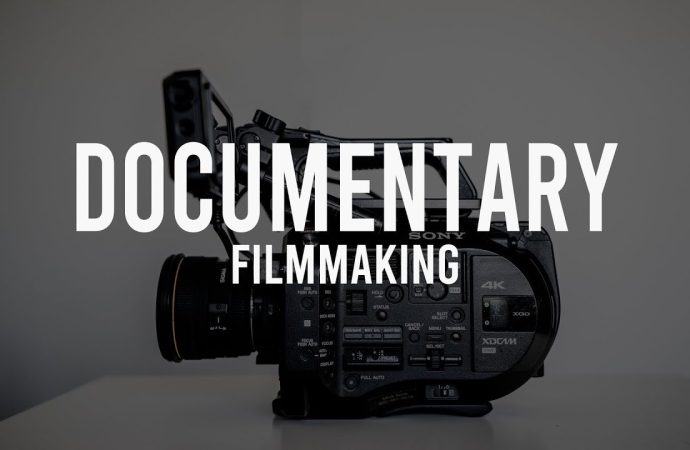Introduction Documentary filmmaking has undergone a significant transformation since its inception, evolving in style, technology, and purpose. This genre of filmmaking, which aims to document reality, educate, inform, and sometimes persuade audiences, has expanded its scope and influence over the years. This article delves into the rich history and evolution of documentary filmmaking, tracing its
Introduction
Documentary filmmaking has undergone a significant transformation since its inception, evolving in style, technology, and purpose. This genre of filmmaking, which aims to document reality, educate, inform, and sometimes persuade audiences, has expanded its scope and influence over the years. This article delves into the rich history and evolution of documentary filmmaking, tracing its roots from the early days of cinema to the present digital age.
Early Beginnings: The Birth of Documentary Filmmaking

Image by: Yandex.com
- The Lumière Brothers and the First Documentaries
The evolution of documentary filmmaking can be traced back to the late 19th century with the pioneering work of the Lumière brothers, Auguste and Louis. In 1895, they invented the Cinématographe, a motion picture camera and projector. Their short films, such as “Workers Leaving the Lumière Factory” and “Arrival of a Train at La Ciotat Station,” are often considered some of the earliest examples of documentary filmmaking. These films captured everyday events and were devoid of narrative or artistic embellishments, focusing instead on the raw depiction of reality.
- Robert J. Flaherty and the Ethnographic Film
The next significant milestone in the evolution of documentary filmmaking was the work of Robert J. Flaherty. His 1922 film, “Nanook of the North,” is often regarded as the first feature-length documentary. Flaherty’s film chronicled the life of an Inuit family in the Canadian Arctic, blending elements of ethnography with storytelling. Though criticized for staging certain scenes, “Nanook of the North” set a precedent for future documentaries, highlighting the potential for film to explore and document different cultures and ways of life.
The Golden Age of Documentary: 1920s to 1940s

Image by: Yandex.com
- The Influence of Soviet Cinema
The 1920s and 1930s saw significant advancements in documentary filmmaking, particularly in the Soviet Union. Filmmakers like Dziga Vertov and Sergei Eisenstein were instrumental in shaping the genre. Vertov’s “Man with a Movie Camera” (1929) is a landmark film that utilized innovative editing techniques and visual experimentation to capture urban life in the Soviet Union. His concept of “kino-eye” emphasized the camera’s ability to reveal truths about the world that were otherwise unseen.
- The Propaganda Films of World War II
The evolution of documentary filmmaking took a dramatic turn during World War II. Governments recognized the power of film as a tool for propaganda and information dissemination. In the United States, filmmakers like Frank Capra and John Huston produced a series of documentaries aimed at boosting morale and justifying the war effort. Capra’s “Why We Fight” series, commissioned by the U.S. government, is a notable example of wartime propaganda that combined factual reporting with persuasive rhetoric.
Post-War Developments: 1950s to 1970s

Image by: Yandex.com
- The Cinéma Vérité Movement
The 1950s and 1960s witnessed the rise of cinéma vérité, a style of documentary filmmaking that emphasized naturalistic and unobtrusive techniques. Originating in France, cinéma vérité (meaning “truthful cinema”) aimed to present a more authentic and unfiltered view of reality. Filmmakers like Jean Rouch and Edgar Morin were pioneers of this movement, with their film “Chronicle of a Summer” (1961) serving as a quintessential example. This style influenced American filmmakers as well, leading to the Direct Cinema movement in the United States.
- The Impact of Television
Television played a crucial role in the evolution of documentary filmmaking during the post-war era. The medium provided a new platform for documentaries, reaching a wider audience than ever before. Programs like CBS’s “See It Now,” hosted by Edward R. Murrow, brought documentary journalism into American living rooms. The accessibility of television allowed for the exploration of diverse topics, from social issues to historical events, further cementing the documentary’s role in public discourse.
The Digital Revolution: 1980s to Present

Image by: Yandex.com
- The Advent of Digital Technology
The advent of digital technology in the 1980s and 1990s revolutionized the documentary filmmaking process. Digital cameras and editing software made it easier and more affordable for filmmakers to produce high-quality documentaries. This democratization of filmmaking led to an explosion of documentary content, with filmmakers from diverse backgrounds and regions contributing to the genre.
- The Rise of Streaming Platforms
In the 21st century, streaming platforms like Netflix, Amazon Prime, and Hulu have transformed the distribution and consumption of documentaries. These platforms have provided a global audience for documentary films, allowing for greater visibility and impact. Documentaries like “13th,” “Tiger King,” and “Making a Murderer” have garnered widespread attention and sparked important conversations on social and political issues.
- The Role of Social Media
Social media has also played a significant role in the evolution of documentary filmmaking. Platforms like YouTube, Vimeo, and Instagram have enabled filmmakers to share their work directly with audiences, bypassing traditional distribution channels. This has led to the rise of short-form documentaries and web series, expanding the possibilities for storytelling and audience engagement.
Conclusion: The Future of Documentary Filmmaking
The evolution of documentary filmmaking is a testament to the genre’s adaptability and enduring relevance. From the early days of the Lumière brothers to the digital revolution and beyond, documentaries have continually evolved to reflect and respond to the changing world. As technology advances and new platforms emerge, the future of documentary filmmaking promises to be as dynamic and transformative as its past. Whether through traditional feature-length films or innovative digital formats, documentaries will continue to inform, inspire, and challenge audiences for generations to come.
















